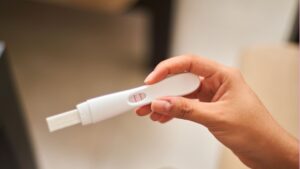
Understanding ovulation symptoms is crucial for fertility tracking, but misinformation abounds. Let’s debunk common ovulation myths and facts to help you navigate your cycle with confidence. From myths about ovulation to the biggest ovulation myths, we’ll set the record straight so you can better understand your body.
1. Do All Women Experience Ovulation Pain (Mittelschmerz)?
Myth: Everyone feels a twinge during ovulation.
Fact: Only 1 in 5 women experience mittelschmerz, a brief pelvic ache caused by follicle rupture. Lack of pain doesn’t mean you’re not ovulating—it’s simply not universal. This is one of the biggest ovulation myths, as many assume pain is a mandatory sign of ovulation.
2. Can You Ovulate Without Cervical Mucus Changes?
Myth: No mucus = no ovulation.
Fact: While fertile cervical mucus (clear, stretchy) usually signals ovulation, some women ovulate with subtle or no mucus changes. This is one of the lesser-known ovulation myths and facts. To confirm ovulation, track basal body temperature (BBT) or use ovulation predictor kits (OPKs).
3. Is Light Spotting During Ovulation a Sign of Pregnancy?
Myth: Spotting = early pregnancy.
Fact: Ovulation spotting (mittelschmerz bleeding) is caused by hormonal shifts, not pregnancy. Implantation bleeding occurs 6–12 days post-conception, much later in your cycle. This is a common misconception among myths about ovulation.
4. Does Ovulation Always Cause Breast Tenderness?
Myth: Sore breasts confirm ovulation.
Fact: Breast tenderness is linked to rising progesterone after ovulation, not the event itself. Many women never experience this symptom, debunking one of the biggest ovulation myths.
5. Can Stress Delay Ovulation and Hide Its Symptoms?
Fact: Yes. High cortisol levels disrupt luteinizing hormone (LH) surges, delaying ovulation and masking symptoms like mucus changes. Chronic stress can lead to irregular cycles, which is an important fact to consider when separating ovulation myths and facts.
6. Are Ovulation Symptoms the Same Every Cycle?
Myth: Symptoms are consistent.
Fact: Symptoms vary due to diet, stress, or health changes. For example, you might have cramps one cycle and none the next—it’s normal! This variability is often overlooked in discussions about myths about ovulation.

7. Do Heightened Senses Always Mean Ovulation?
Myth: Sharp smell/taste = ovulation.
Fact: While estrogen spikes can heighten senses, this isn’t a universal or reliable sign. Pregnancy, allergies, or even caffeine can also alter sensory perception. This is one of the more subtle ovulation myths and facts.
8. Is Ovulation Cramping a Reliable Sign of Fertility?
Myth: Cramps = peak fertility.
Fact: Cramps confirm ovulation occurred, but your fertile window starts 5 days prior. Rely on mucus changes or OPKs for timing intercourse. This is a key point when addressing the biggest ovulation myths.
9. Can You Have Symptoms But Not Actually Ovulate?
Myth: Symptoms guarantee ovulation.
Fact: Anovulatory cycles (no egg release) can mimic symptoms like cramps or mucus. Conditions like PCOS often cause this. Confirm ovulation with BBT or progesterone tests. This is a critical fact to consider when evaluating ovulation myths and facts.
10. Do OPKs Work If You Don’t Have Symptoms?
Fact: Yes! OPKs detect LH surges, not symptoms. They’re 99% accurate if used correctly, even if you lack cramps or mucus changes. This is an essential tool for those navigating myths about ovulation.
By debunking these ovulation myths and facts, you can approach ovulation tracking with clarity. Always consult a healthcare provider for persistent irregularities or conception concerns.
For hassle-free tracking, use the Hey Baby Mama Ovulation Calculator to pinpoint your fertile window with personalized predictions—accuracy made simple!







